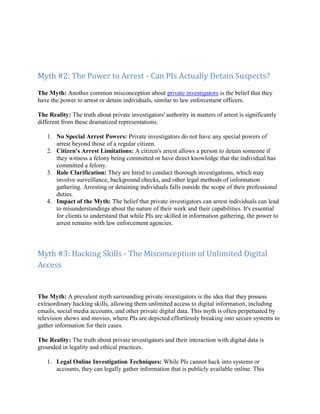Police Investigation Lengths: Myths vs. Reality
The portrayal of police investigations in movies and television often paints a dramatic picture of swift resolutions, with cases solved within a single episode. Reality, however, is far more nuanced and complex. The length of a police investigation varies dramatically depending on numerous factors, leading to significant discrepancies between popular perception and the actual process. This article delves into the myths surrounding police investigation timelines and explores the realities that shape their duration.
Myth 1: Most Investigations Are Solved Quickly
Reality: The truth is that most investigations, especially those involving serious crimes, take considerably longer than depicted in media. Simple crimes like petty theft might be resolved relatively quickly, but complex cases such as homicides, rapes, and large-scale fraud can take months, even years, to conclude. The time required depends heavily on the complexity of the case, the availability of evidence, and the resources dedicated to the investigation.
Myth 2: A Lack of Evidence Means a Case Is Unsolvable
Reality: While a lack of readily available evidence certainly presents challenges, it doesn't automatically mean a case is unsolvable. Modern forensic techniques continue to evolve, offering new ways to analyze even the smallest traces of evidence. Furthermore, investigative techniques such as witness interviews, surveillance footage analysis, and digital forensics can often unearth crucial information over time. Patience and persistence are key components of successful long-term investigations.
How Long Do Different Types of Investigations Typically Take?
The timeframe for a police investigation significantly depends on the nature of the crime. Here's a breakdown:
- Minor Crimes (e.g., petty theft, vandalism): These can often be resolved within days or weeks, primarily through witness statements and readily available evidence.
- Felonies (e.g., robbery, assault): These investigations generally take longer, often ranging from several weeks to several months. The complexity of the crime, the number of suspects, and the amount of evidence to be processed all impact the timeline.
- Serious Crimes (e.g., homicide, rape, complex fraud): These investigations can last for months, even years. They often involve extensive forensic analysis, witness interviews, and the need to build a strong case for prosecution. The investigative process requires meticulous attention to detail and can be significantly hampered by resource constraints.
What Factors Influence Investigation Length?
Several factors contribute to the duration of a police investigation:
- Complexity of the Crime: Simple crimes are naturally faster to investigate than complex ones with multiple suspects, locations, and layers of evidence.
- Availability of Evidence: A lack of readily available evidence often necessitates extensive forensic analysis, which can be time-consuming. Conversely, an abundance of evidence may speed up the process.
- Resources: Adequate funding, staffing, and technology are crucial for efficient investigations. Under-resourced departments may face significant delays.
- Cooperation of Witnesses: Uncooperative witnesses can significantly hinder an investigation. Securing witness testimony can be a lengthy and challenging process.
- Suspect’s Actions: A suspect’s actions—such as fleeing the jurisdiction or destroying evidence—can prolong the investigation.
How Can Investigations Be More Efficient?
Improving efficiency in police investigations requires a multi-pronged approach:
- Increased funding for law enforcement: This ensures access to necessary technology and resources, including advanced forensic labs and trained personnel.
- Improved technology and training: Investing in better technology and providing thorough training to officers enhances investigative capabilities.
- Enhanced inter-agency collaboration: Effective coordination between different agencies involved in an investigation can streamline the process.
- Data-driven approaches: Leveraging data analytics to identify patterns and prioritize investigations can improve efficiency.
Conclusion:
The reality of police investigation lengths is far removed from the dramatic speed often portrayed in media. Understanding the complexity, resources required, and various factors influencing investigation duration is crucial for fostering a more realistic and informed perspective on the critical work of law enforcement. While the goal is always swift resolution, the pursuit of justice often demands patience, persistence, and a commitment to thorough investigation.

